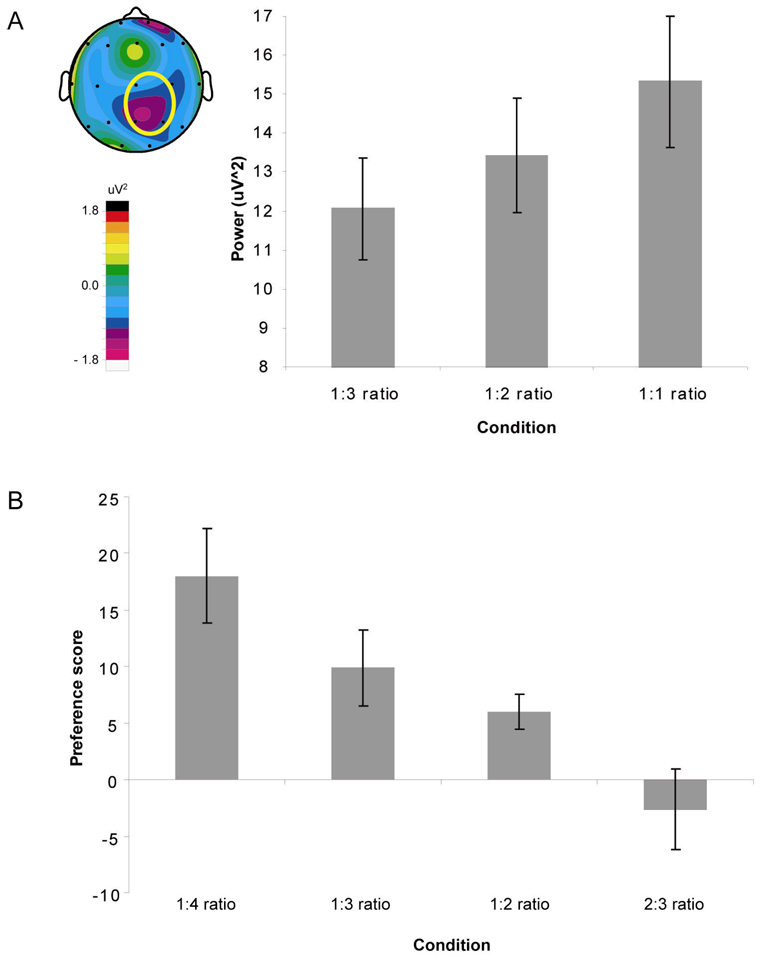Fig. 2.
Evidence for ratio-dependent number discrimination in infancy provided by two separate studies. (a) Power in the 6 to 8 Hz alpha-frequency band of the infant electroencephalogram (EEG) decreases as a function of numerical ratio between a familiar and novel numerosity (1:3, 1:2, or 1:1). Effects of numerical novelty and ratio dependency in the alpha-band were found over parietal and central scalp sites (see insert in fig. 2a). (b) Infants’ preference to look to a numerically changing image stream as compared to a numerically non-changing image stream increases as a function of numerical ratio. Panel (a) reproduced from “Induced Alpha-Band Oscillations Reflect Ratio-Dependent Number Discrimination in the Infant Brain,” by M.E. Libertus, L.B. Pruitt, M.G. Woldorff, & E.M. Brannon, in press, Journal of Cognitive Neuroscience. Reproduced with permission. Panel (b) reproduced from “Stable Individual Differences in Number Discrimination in Infancy,” by M.E. Libertus, & E.M. Brannon, in press, Developmental Science. Reproduced with permission.

